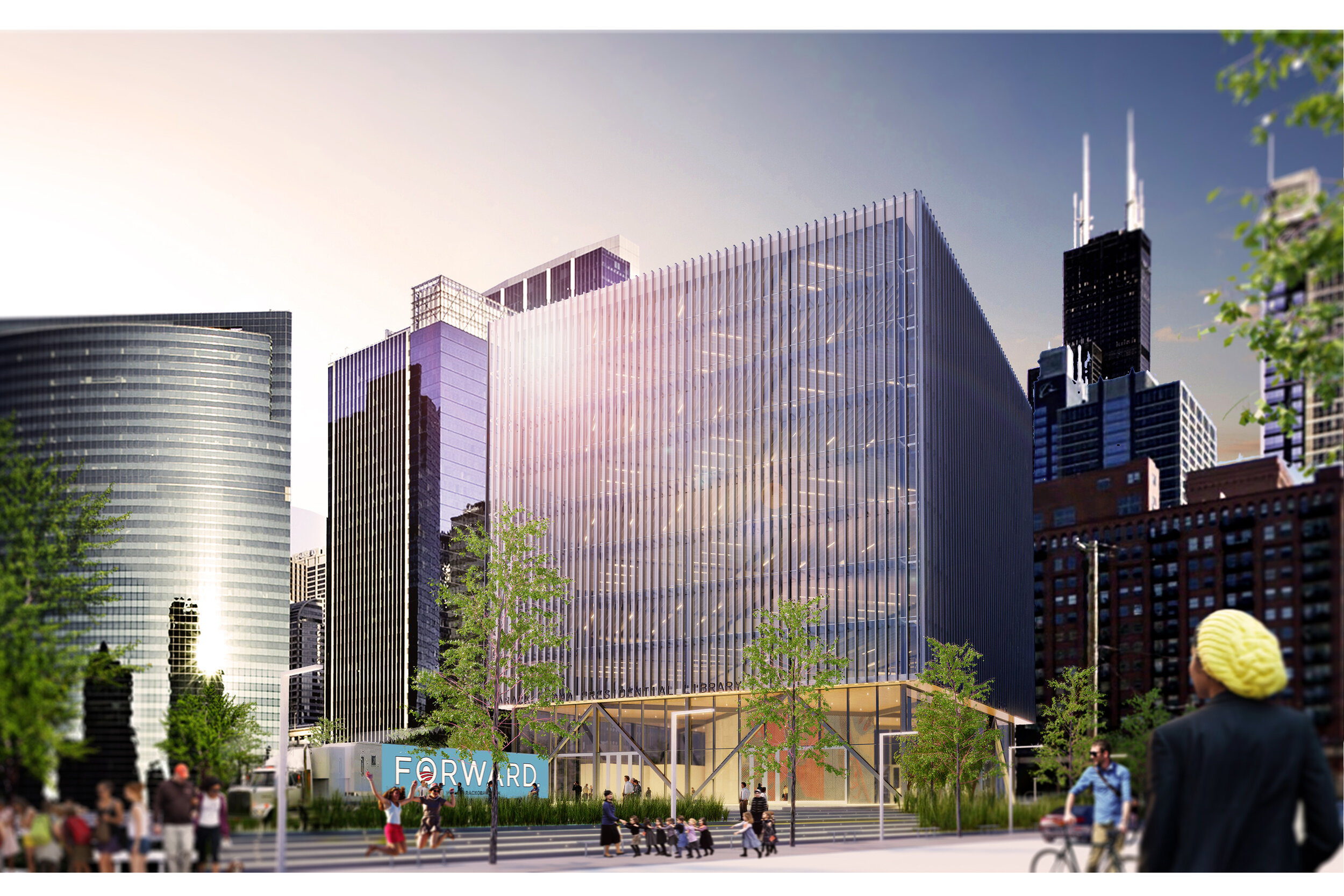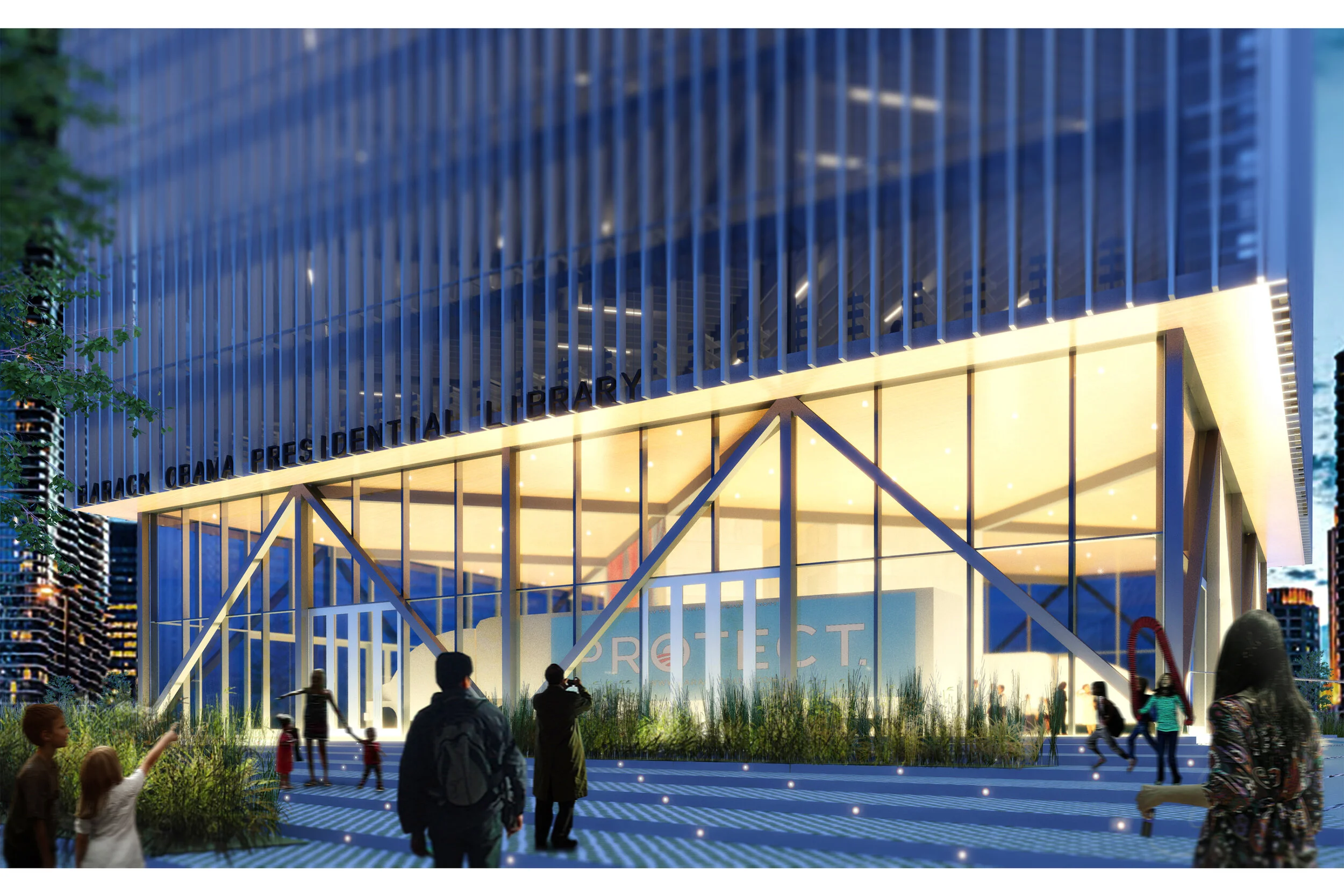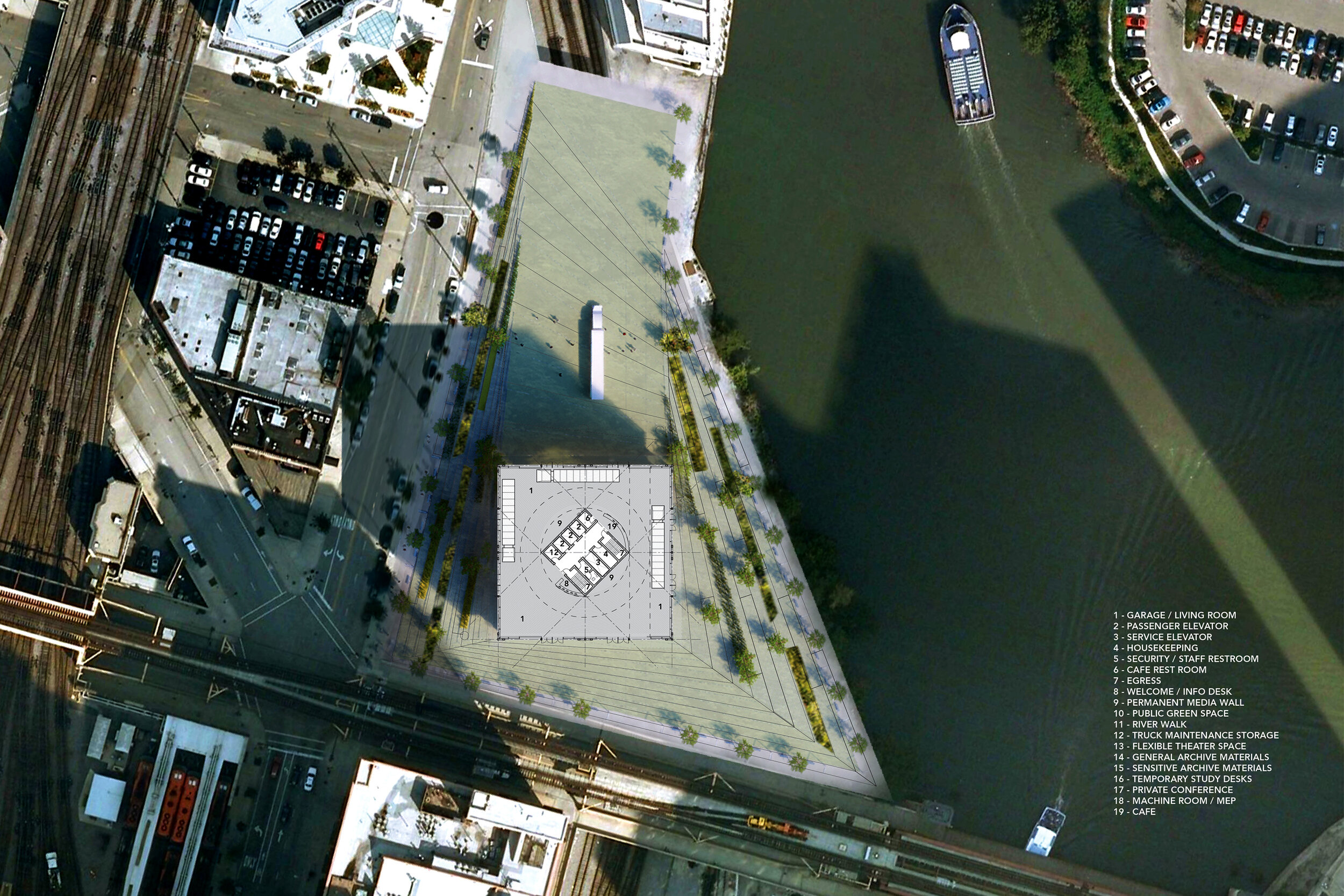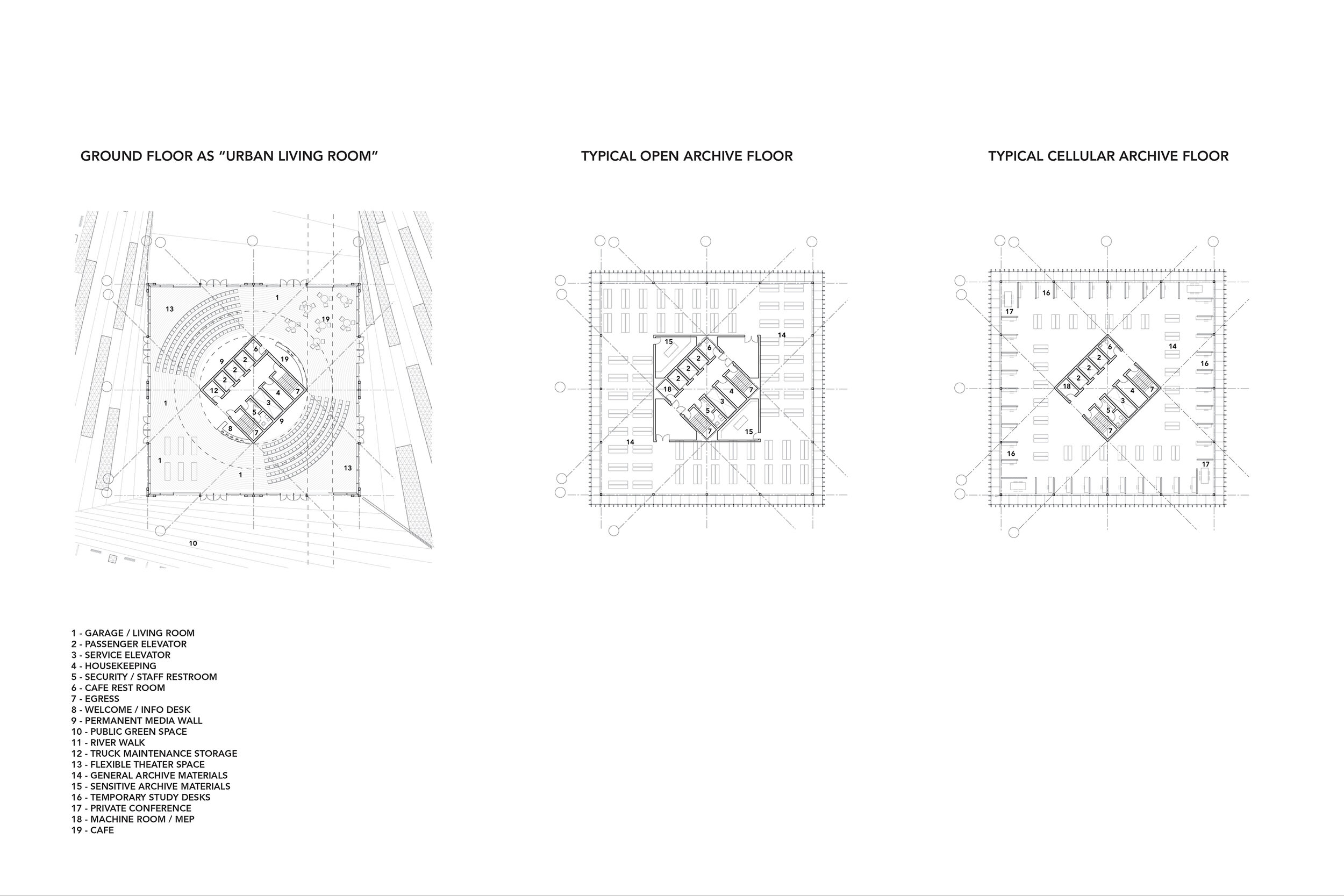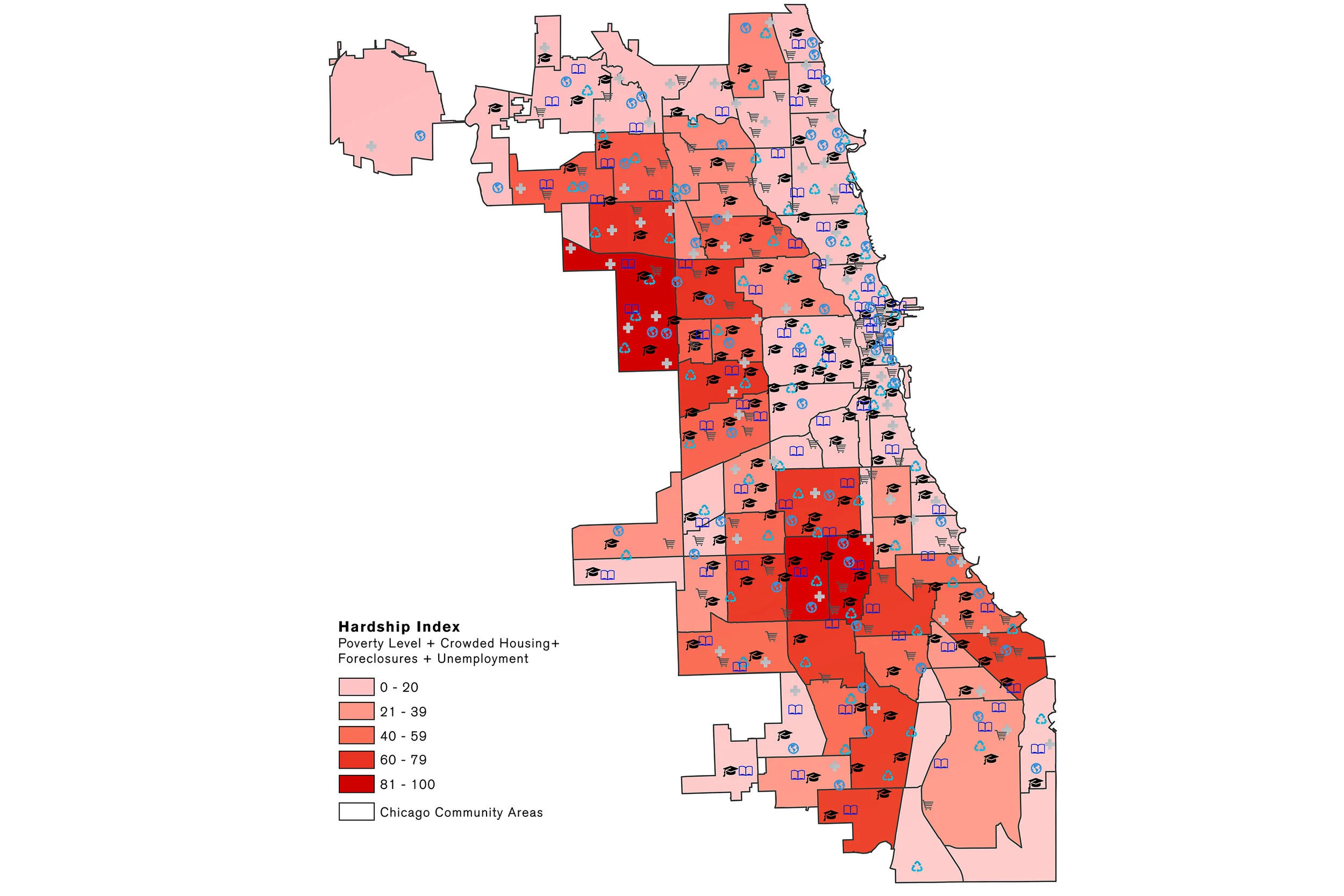Barack Obama Presidential Library
Year / 2015
Location / Chicago, Illinois, USA
Building Type / Presidential Library
Building Area / 86,350 sf
Status / Competition Finalist
The typology of the Presidential Library is fraught with formality.
Through the building-analysis of twelve precedent libraries, we find in each structure several architectural and operational commonalities. Privately erected, yet federally maintained, these building systems are motivated by a double-purpose of ensuring the preservation of historic materials, while also making them available to the public.
At their core, these projects maintain a deeply embedded and well-packed archive. These areas typically have separate temperature controls, lighting conditions, and security clearances from the front-of-house galleries. Civic function, then, is typified through a process of “inflating” the archive walls with stylized galleries and historicisms. The artifacts chosen to display in this “public realm” are often meant to enshrine and commercialize the president’s life.
As the production of architectural narrative intervenes and conditions the visitor’s experience, we have chosen to liberate the archival core from its vernacular wrapper– recasting it as a naked and autonomous urban figure.
The new Archive Building acts as an architectural crate within the city, providing visual connections to the artifacts and document-stacks within. Taking cues from neighboring infrastructure and distribution centers, the taut storage volume hovers above an expansive ground plane, allowing for through-access and stationing of mobile galleries: the archive’s New Strategy for community outreach.
Every morning electrically-powered pop-up trucks exit the hub, combing the city with content and media sourced from the archival core. Each truck is branded to typify one of President Obama’s core positions, maintaining a schedule of value-specific destinations: CHANGE - national identity and tourism hotspots; FORWARD - public schools; PROGRESS - public libraries and technology centers; PROTECT - parks and green spaces; HOPE - retirement facilities and hospitals; FREEDOM - shopping centers.
Fit out with interactive touch-screens and immersive web applications, the mobile archives are meant to redefine the way people “visit” the museum; from a static, historic expression of the president’s legacy, to a responsive piece of infrastructure, redefining itself alongside the city.


